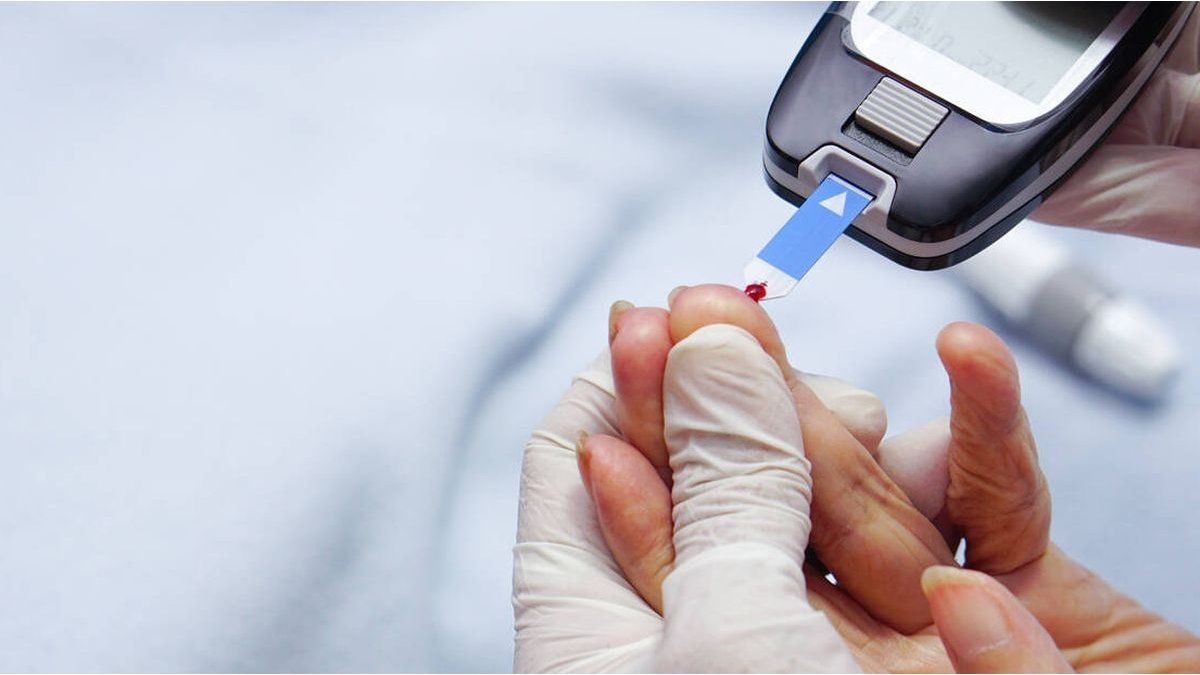“Diabetes is a chronic disease characterized by high blood sugar levels. Blood glucose (blood sugar), when it reaches values above normal, is called hyperglycemia and when these values are maintained over time it can lead to complications in different organs of the body. People with diabetes have an alteration in the production and/or functioning of insulin, so glucose remains outside the cell, accumulating in the blood (hyperglycemia),” explains the Dr. Viviana Cantarutti, OSPEDYC clinical doctor.
It is called “chronic” because it accompanies the patient throughout their entire life. However, with monitoring and controlled treatment, complications can be prevented and a completely normal life can be led.
Types of Diabetes
- Type 1 diabetes: It develops when the pancreas does not produce insulin, therefore glucose cannot enter the cells. It usually begins before the age of 30 and treatment requires following an appropriate eating plan and taking insulin injections every day.
- Type 2 diabetes: In this case, although there is insulin production, it is insufficient, and it acts incorrectly and the entry of glucose into the cells is hindered (insulin resistance). Although it usually begins after the age of 40, the disease is increasingly seen in younger people. This type of diabetes is associated with overweight and obesity, inadequate diet, lack of physical activity and a family history of type 2 diabetes.
- Gestational diabetes: It is high blood glucose that begins or is diagnosed during pregnancy.
- Another specific type of diabetes, less common, is diabetes caused by other diseases or medications, such as diseases of the pancreas.
“To diagnose diabetes, fasting blood glucose (basal glucose) is measured and is recommended for all people over 45 years of age; In those under 45 years of age, it is recommended when there is at least 1 risk factor,” says Cantarutti.
What are the risk factors?
- Family members with diabetes (parents, siblings, children).
- Diabetes during pregnancy.
- Women with children born weighing more than 4 kg.
- Overweight or obesity.
- Insufficient physical activity, sedentary lifestyle.
- Cardiovascular disease.
- Arterial hypertension.
- High cholesterol.
- Smoking.
“To take into account,” says the professional, “fasting blood glucose values should be less than 110 mg/dl in people without risk factors, and less than 100 mg/dl in people with risk factors. When values range between 100 and 125 mg/dl, it is considered altered fasting blood glucose, and values equal to or greater than 126 mg/dl, diabetes is diagnosed in at least two measurements.”
Regarding the symptoms of diabetes, they can vary according to each person and depending on the type of diabetes:
Type 1 diabetes usually produces symptoms quickly and clearly after the lack of insulin production, so its diagnosis is usually practically immediate after the onset of symptoms.
For its part, type 2 diabetes is much more gradual. Several years can pass without symptoms that make us suspect its presence, so the diagnosis can be made when performing a blood test for another reason.
How do I detect the symptoms?
- Lack of energy.
- Polyuria (urinate a lot).
- Polyphagia (increased appetite).
- Polydipsia (drinking a lot due to thirst).
- Weight loss.
- Blurred vision.
- Recurrent urinary tract infections.
- Recurrent skin infections.
- Wounds that take time to heal.
What complications can diabetes bring?
- When blood sugar has values above normal, sustained for a long time, it can lead to chronic complications.
- When small blood vessels are affected, they are called microvascular complications, which can affect the eyes, kidneys, and nerves in the feet. If the largest blood vessels are affected, we speak of macrovascular complications and put the heart, brain and/or arteries of the lower limbs at risk.
- The complications of diabetes can be prevented by controlling blood glucose levels and other cardiovascular risk factors, such as: high blood pressure, dyslipidemia, obesity, smoking and a sedentary lifestyle.
Recommendations for your treatment
- Diabetes education: incorporating knowledge about the disease and strategies for its care is a fundamental component of the treatment of diabetes and other chronic diseases.
- Healthy lifestyle: includes a balanced eating plan, aerobic physical activity and not smoking.
- Pharmacological treatment: oral medication or insulin injections.
- Treatment of their risk factors and associated diseases: hypertension, overweight or obesity, high cholesterol, among others.
In this sense, Dr. Cantarutti adds that “it is proven that type 2 diabetes can be largely avoided by adopting a healthy lifestyle, through an eating plan, physical activity and avoiding smoking. Physical exercise, at least 30 minutes a day, 5 days a week, can reduce the risk of developing type 2 diabetes by up to 40%.”
Source: Ambito
David William is a talented author who has made a name for himself in the world of writing. He is a professional author who writes on a wide range of topics, from general interest to opinion news. David is currently working as a writer at 24 hours worlds where he brings his unique perspective and in-depth research to his articles, making them both informative and engaging.




